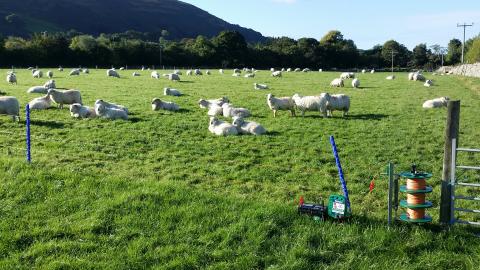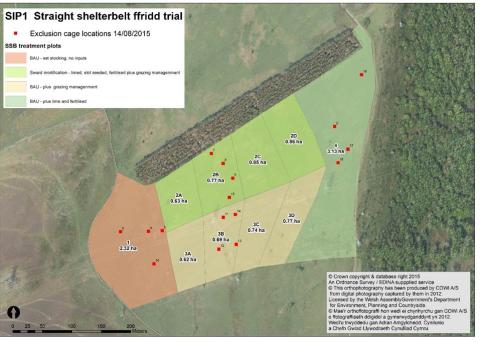The SIP demonstrations at Henfaes aim to increase grassland productivity through optimised soil, nutrient and grazing management
- Better utilisation of grass as the base of lamb production systems
- Enabling cost-benefits to be determined for both low- and high-input approaches to the sustainable intensification of upland and lowland pasture systems
Image

Field-scale paddocks (in upland ‘ffridd’ and lowland fields) have been subject to the following treatments:
- +/- nutrient and lime inputs
- +/- optimised grazing (rotational grazing or set-stocking)
- +/- re-seeding with high-sugar grass & clover
- Control (‘business as usual’ management)
Image

Early observations
Fine spatial analyses showed significant variation in soil quality (P and K indices, pH and compaction). Preliminary results suggest that:
- Grass quantity and quality is better on improved and rotationally grazed plots
- Stocking densities on the rotationally grazed ley are 1.5-2 times that of the set-stocked
Early indications are that there is significant capacity to increase output per hectare with little or no extra fertiliser input.